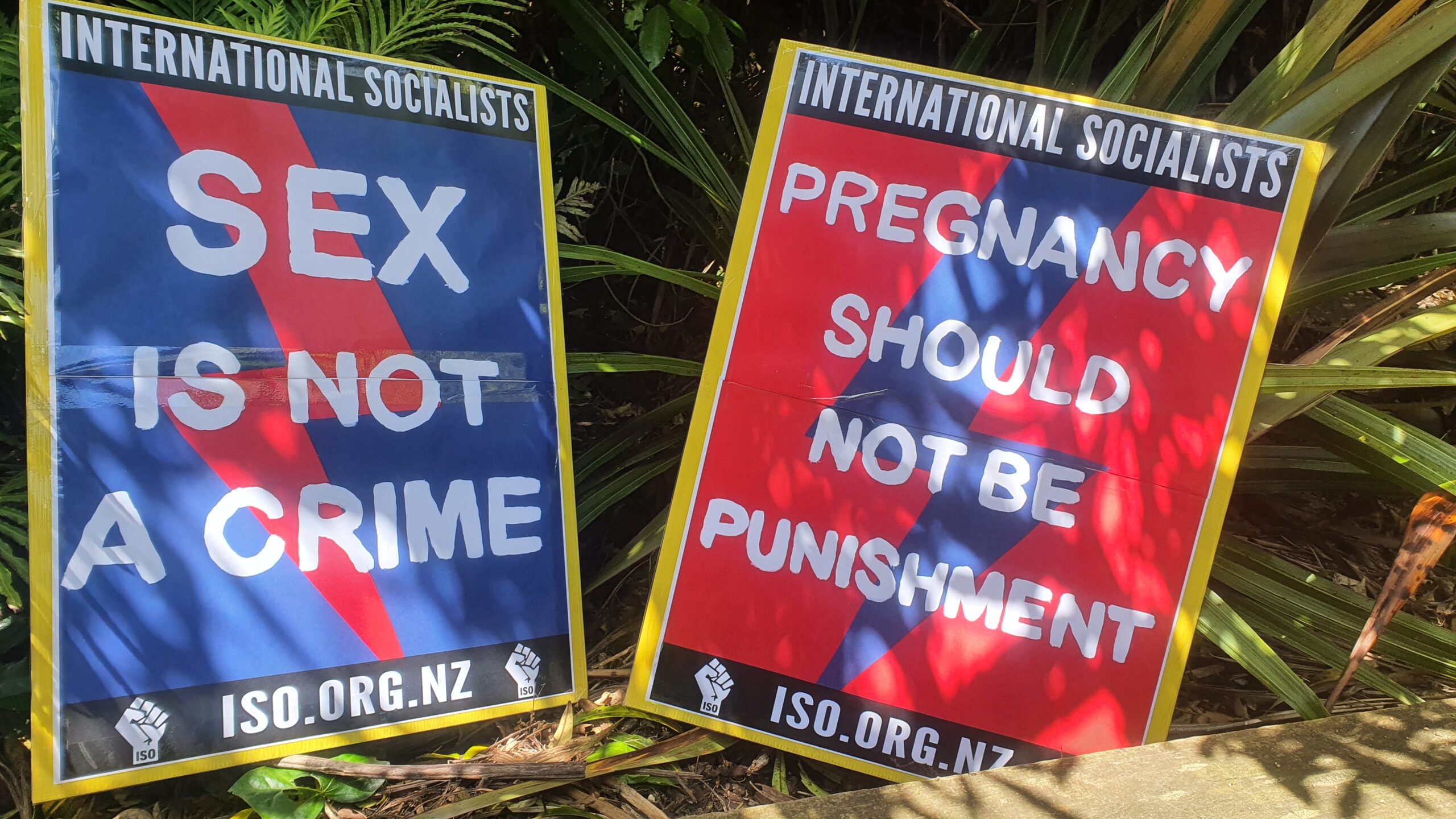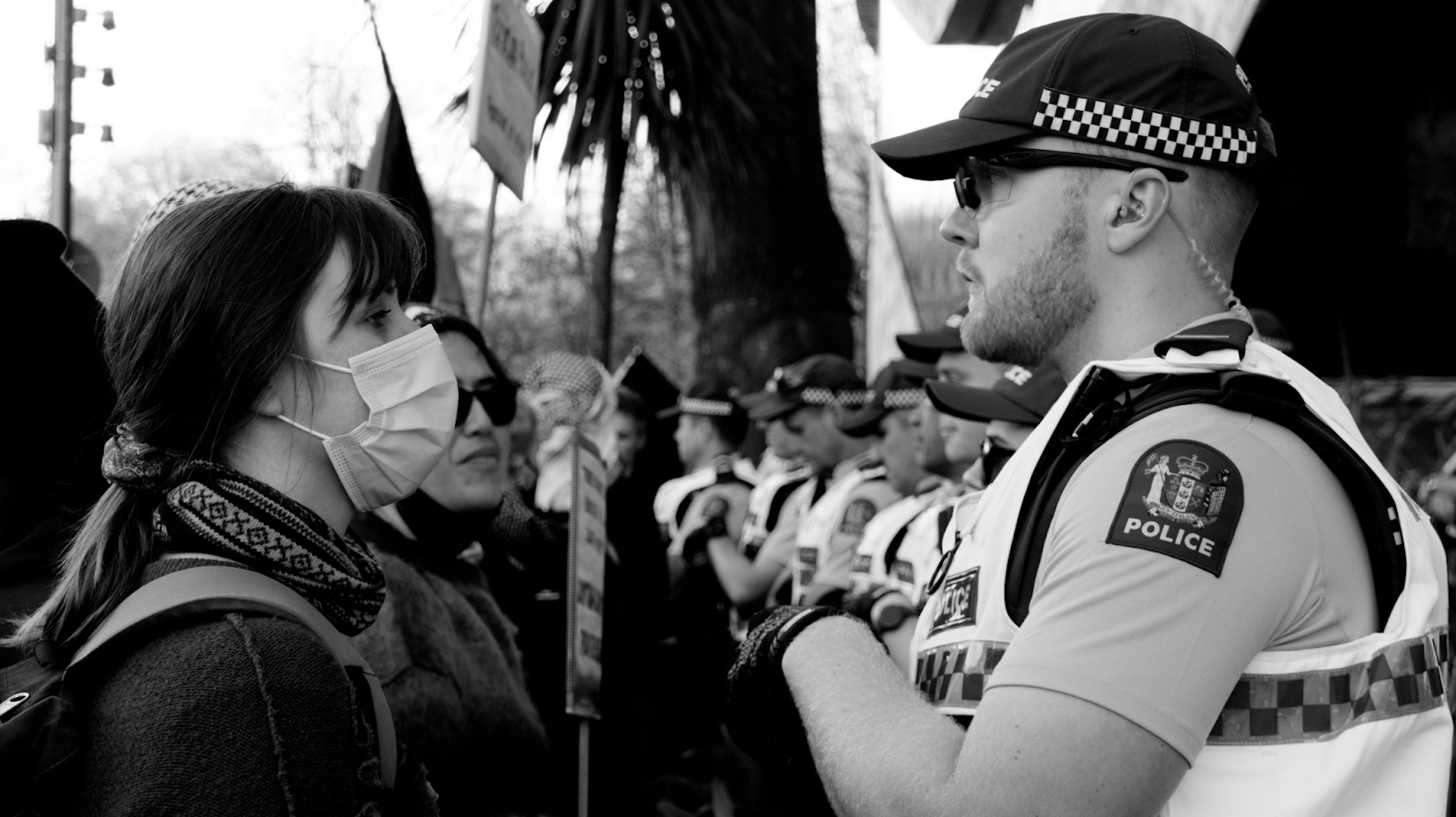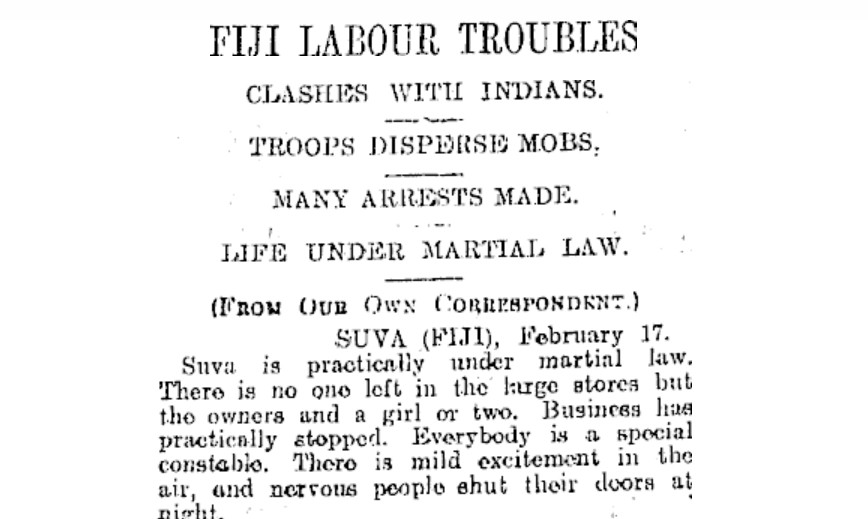This talk was given to the Dunedin branch of the International Socialists by Miranda B to mark International Women’s Day 2013.
The first International Women’s Day (IWD) celebration was held over 100 years ago in 1911. In the last few years it has been taken over by mainstream or bureaucratic bodies, in particular the United Nations. In Australia, the 2011 centenary had major corporations as sponsors. Get “Platinum Empowerment” with PricewaterhouseCoopers and “Gold equality” with Avon. Big business is genuinely interested of course – in promoting women bosses, and telling rich women where to spend their money.
Indeed, the exclusivity of the whole shebang was illustrated by the NZ contingent of the United Nation international women’s committee’s invitation to a $30 breakfast at the Milford Cruising Club on Auckland’s North Shore. This year the UN IWD website is sponsored amongst others by the International Finance Company, Scotia Bank and BP. In many countries IWD is a public holiday, but in many places has also lost much of its political flavour, taking on the equivalent status of Mothers’ Day or Valentine’s Day.
Now the real history of IWD is of a day that belongs to socialists and activists within the working class and in movements for change from below.
Where did it start?
The story of IWD is the story of Clara Zetkin, a leading member of the German Social Democratic Party in the early 1900s. Zetkin argued that the working class would never win its battles without women. She raised the issue of special party work among women. Under her leadership, a working women’s movement grew rapidly in Germany in the first part of the twentieth century, and the female membership of the Social Democratic Party rose 15-fold from around 10,000 in 1907 to 150,000 in 1913.
It was against this background that Zetkin proposed the establishment of an international women’s day at the International Socialist Women’s Conference in Copenhagen in August 1910. She was inspired by American socialists who had held women’s demonstrations and meetings the year before. The slogan for the first International Women’s Day was to be: “The vote for women will unite our strength in the struggle for socialism.”
This was in major contrast to the bourgeois feminist and suffragette movements of the time. By bourgeois, I mean the social class that’s characterized by their ownership of capital, and the culture that goes with it. The bourgeoisie are members of the social class that owns the means of production, and are concerned with the value of property and the preservation of capital to ensure their continuing dominance of society.
The feminists of the bourgeois class made suffrage (the right to vote) a single issue apart from other struggles. In the 1890s the largely middle-class American suffragettes shared their husbands’ fears that the huge numbers of poor immigrants – Irish, Italian and Eastern European – would weaken the political power of the established classes. The women turned to a narrow and vicious, but persuasive, argument that it would be insulting to them if ignorant, low-born foreigners should be able to vote while they could not; if these women were given the vote, the number of ‘true Americans’ would be doubled, and the forces of law and order strengthened. There was but one way to avert the agitating workers and shiploads of foreigners from holding the governments of the cities in the hollows of their hands and despoiling the wealth of the country…. Cut off the vote of the slums and give it to (respectable) women!
Thus bourgeois women were prepared to compromise and accept a limited franchise. A property qualification that would exclude large numbers of lower class and working women. A similar line of reasoning was used in the Southern states as a means of ensuring the perpetuation of white supremacy. Zetkin called the limited suffrage campaign “a falsification and humiliation of the very principle of political equality for women”.
In 1911, the idea of International Women’s Day was taken up enthusiastically, with more than a million women and men marching and rallying in Austria, Germany, Switzerland and Denmark and other major industrial cities of Europe. According to the Russian socialist Alexandra Kollontai “Germany and Austria were one seething, trembling sea of women”.
Throughout the Austro-Hungarian Empire, there were 300 women’s demonstrations. In France were strikes in Paris and north of France, including one of housewives over high prices. In subsequent years and throughout the First World War, International Women’s Day continued to provide a focus for activists. In 1913 and 1914 women across Europe held peace rallies on or around 8 March. In 1915, socialist women held a march in Bern, Switzerland, in opposition to their own countries’ war effort, which was treason in wartime.
Peace and bread
The most famous events associated with International Women’s Day were to occur in Russia. While living in Germany in exile, the Russian revolutionary Alexandra Kollontai met Rosa Luxemburg, a German revolutionary of Polish Jewish descent, and Clara Zetkin. They were convinced of the need for a special proletarian women’s movement to counter the activities of the bourgeois feminists. Kollontai brought the idea of IWD to Russia and helped organise events in the years leading up to the war. In Petersburg in 1913, Bolshevik women workers organised a large meeting advertised as a “scientific morning devoted to the women question” – this sort of subterfuge was necessary under tsarism.
Kollontai described what happened: “This was an illegal meeting but the hall was absolutely packed. Members of the party spoke. But this animated ‘closed’ meeting had hardly finished when the police, alarmed at such proceedings, intervened and arrested many of the speakers.”
In 1914 police again intervened before the main meeting and arrested many people. Some women were nonetheless able to celebrate IWD with flash meetings around the city, and similar small actions were possible in 1915 and 1916.
By 1917, deteriorating living conditions had resulted in strong feelings. The major frustration with food shortages and long queues had already produced food riots, and the large number of women workers in large factories had already carried out many strikes. In Petrograd, food riots, economic strikes and a political strike combined to ignite the Russian Revolution. And it was all sparked by women determined to celebrate International Women’s Day.
The local Bolsheviks knew the idea of going into the streets was popular, but judged the time unripe for militant action. When a group of women from the Vyborg district asked for advice on how to celebrate IWD the Bolsheviks told them to “refrain from isolated actions and follow only instructions of the party committee”. The women decided to strike anyway. In spite of all directives, women in Petrograd chose to protest and strike for “Bread and Peace” on 23 February (which fell on 8 March on the Gregorian calendar).
They held a series of meetings and rallies for International Women’s Day. Demonstrations organised to demand bread were supported by the industrial work force. Women textile workers in several factories went on strike and sent delegates to metal workers for support. The women workers marched to nearby factories bringing out over 50,000 men and women workers on strike. By 25 February, the strike had spread to 240,000 workers, and many others such as high school students. Mass demonstrations surged through the town. The following day large parts of Petrograd were in control of the insurrection and when soldiers went over on 27 February, the tsar abdicated.
In the Russian February revolution we can see the key connections between economic and political demands that we’ve seen recently in Egypt. The women started out with economic demands: that is, for bread. But once they moved into action in the politicised environment at the time, the demands became political. Trotsky later commented that the women played a key role in relations between workers and soldiers. “They go up to the cordons more boldly than men, take hold of the rifles, beseech, almost command: put down your bayonets – join us.”
Kollontai summed it up this way: “The 1917 Working Women’s Day has become memorable in history. On this day the Russian women raised the torch of proletarian revolution and set the world on fire.”
Where are women today?
There have undoubtedly been significant changes in the attitude and position of women in society over the last few decades. However, we don’t have to look too far to realize that inequality, discrimination and oppression continue to exist.
In New Zealand, women are concentrated in low paid, part-time work. One in eight prime-aged workers is employed as personal care worker, sales worker or cleaner and caretaker. Over two thirds of these workers are low paid, that is they earn less than $15.30 per hour. Approximately twice as many women than men earn such a low wage.
For Maori and Pacific women things are even worse. In the June quarter of 2005, female average hourly earnings from wages and salaries were $16.80, 85.8 percent of male average hourly earnings of $19.58. The average hourly wages and salaries of Maori and Pacific women were substantially lower than those for women overall. Maori women’s average hourly earnings were $15.22 or 77.7 percent of average male hourly earnings and the average earnings for Pacific women were $13.34 or 68.1 percent of average male hourly earnings.
In November last year, the New Zealand Herald newspaper reported the gender pay gap to be the biggest in 10 years. Causes included rising unemployment, an increase in part-time jobs and the fact that the Equal Pay Act, passed in 1972, was no longer effective, given the proportion of contract work.
In this economic climate, women and particularly poor women are hardest hit by austerity measures. Women are over-represented in the public services, repeatedly targeted for spending cuts. They also receive more income from social services so will suffer harder with benefit and social service cuts. Women were also hit hardest by job losses following the Canterbury quake.
According to the Human Rights Commission 2012 ‘Women’s Report’,
• Twenty two government departments have gender pay gaps bigger than the average pay gap in the labour market.
• Nine government departments have more than a 20% gender pay gap including Treasury and the Department of Prime Minister and Cabinet.
• Women are still less than 30% of judges, less than 25% of senior academic staff, and less than 20% of top legal partnerships.
• The percentage of women on government-appointed state sector statutory bodies has slipped again.
• Women in Modern Apprenticeships are still not well-represented in better paid trades.
Appallingly, four of New Zealand’s 20 DHBs had a gender pay gap of 30-40%!
At the top end of the job market, the report found that New Zealand is making slow, incremental but unspectacular progress for women in many areas. For example, while women on boards of the top 100 companies listed on the New Zealand Stock Exchange have climbed over 10% for the first time, they have yet to reach 15%. At the rate of progress for women in corporate governance over the past decade, it will be another 35 years before boardroom equality is achieved.
This is really not surprising given the loud culture of oppression and discrimination faced by women. In 2011 Alasdair Thompson, then chief executive of the NZ Employers and Manufacturers produced the sublimely ridiculous comments linking women’s menstruation to gender productivity. They cost Thompson his job but gave voice to the ‘feminist backlash’.
Women continue to face oppression in many areas aside from the employment front. Many women experience violence and abuse in and outside the family. Domestic violence is a major human rights issue across the world, and one of New Zealand’s most serious social issues. It is one of the leading causes of injury and death to women, and also leads to short and long-term health problems such as mental illness, and problems with sexual and reproductive health. From statistics collected by Women’s Refuge, 33% to 39% of women experience physical or sexual violence from an intimate partner in their lifetime; on average 14 women, six men and 10 children are killed by a member of their family every year; Police are called to around 200 domestic violence situations a day – that’s one every seven minutes on average; Police estimate only 18% of domestic violence incidents are reported; 84% of those arrested for domestic violence are men; 16% are women.
In early January this year, protests broke out in India over a gang rape of a young woman on a bus in Delhi. Nevertheless a ‘blame the victim’ approach is perpetuated by the law. In Canadian, a Toronto police officer, Michael Sanguinetti, suggested women should avoid rapes by “not dressing like sluts” – sparking the Slutwalk movement.
Restrictive abortion laws also result in injury and death to many women. In Ireland recently, a young woman died in a hospital because doctors refused to abort the unviable fetus. Tens of thousands of Irish people gathered to demand immediate action to introduce abortion legislation in Ireland.
Restrictive abortion laws cost lives. Across the world some 68,000 women die each year of unsafe abortion annually, making it one of the leading causes of maternal mortality (13%). Of the women who survive unsafe abortion, 5 million will suffer long-term health complications. In New Zealand abortion is only legal if two certifying consultants agree that the pregnancy will seriously harm a woman’s physical or mental health.
Why are women oppressed?
Explanations as to why women continue to experience inequality and oppression are many and varied. Different explanations lead inevitably to different strategies and solutions. For some it is primary a question of equal opportunity. Emphasis is placed on changing the law, education and attitudes in order to ‘level the playing field’ to allow women to become equal with men. Such equality, it is argued, can be achieved within the existing economic and social system.
Biology has been used to both justify and explain women’s oppression. Early scientific explanations, which portray women’s inferior position as ‘natural’, focused on the size of women’s brains or their physical weaknesses. Today such arguments can appear ridiculous. Yet quite recently socio-biology and evolutionary psychology have tried to present a genetic explanation for universal male behavior including not doing the ironing, promiscuity and rape.
The Marxist analysis of the origins of women’s oppression is rooted in the development of private property, class society and the family as an economic and social institution.
Women’s oppression existed before the rise of capitalism, but has not always existed. It is not to do with innate differences and inequalities between the sexes, nor is it timeless: women’s oppression is a product of class society.
As gatherer-hunter societies developed agriculture and advanced their forces of production, for the first time the production of a surplus occurred. However the surplus was enough for some people to live above the subsistence level, but not for everyone to do so. This gave rise to an exploiting class and an exploited class. Certain sections of society became freed from the toil of subsistence living, leading to further advances in the forces of production.
According to British socialist Chris Harman, this was important in the development of women’s oppression. Heavier machinery excluded women from some tasks, displacing them from key productive roles, and the surplus came to be controlled by males. Thus came about, as Engels put it, ‘the world historic defeat of the female sex’.
The nuclear family (or the ideal of the nuclear family) arose during the early industrial era. The extended peasant family structure was destroyed as peasants were displaced from their homes, driven into the cities to work in the rapidly growing new factories. Men, women and children were expected to work long days for a subsistence wage. As a result, factories took lives and along with the dwindling number of workers from the countryside, the problem of the reproduction of workers forced the capitalists to rethink the family. The nuclear family was designed to provide the material needs for current workers while bringing up the next generation of workers.
Certain elements of older patriarchal ideology were used, such as religious texts and rituals, to convince workers – and capitalists – of the new family structure. This had nothing to do with desire of individual men to oppress women, but rather was a necessity for the continuation of capitalism.
Working class women and their unpaid work raising children and working in the home are integral to the capitalist system. The declining birth rate is so threatening to the extent that a Liberal Party politician in Australia once called on women to have ‘one for mum, one for dad, and one for the country’. This is what, in economic terms, having children means… reproducing labour power. Women’s role as domestic servants and mothers is cemented into capitalist ideology and is central to women’s oppression.
This matters when it comes to women’s liberation. Although it is important to challenge sexist attitudes, fighting ideas alone will not tackle oppression. Quota systems for more women on boards of directors isn’t going to make life better for the majority of women. The liberation of working-class women cannot be won without a massive reorganisation of society, and a socialisation of the ‘private’ and ‘domestic’ labour that women do in housework and childrearing.
Sexist ideas – promoted in the media, school, advertising – play a role in perpetuating this system, but they do not drive it. The ideology of oppression is imposed on the working class from above, from the ideas of the capitalist class.
Throughout history women have fought back against inequality, discrimination, injustice and oppression in all its forms.
Working class women have surmounted enormous obstacles to take their place in historic struggles for change. Burdened down with family and household responsibilities, super-exploited in difficult working conditions, they have, in the words of one working class suffragist, had to fight with ‘one hand tied behind’ them.
They have also have to contend with an ideology which has traditionally assigned them specific roles and behavior within class society. At times these ideas have been echoed by leaders of their own class organizations such as trade unions and political parties. Nevertheless, working class women have demonstrated time after time that they are not backward and can become organized. Once mobilized they have been amongst the most determined fighters for change. Through struggle they have challenged backward attitudes in society and transformed their own lives.
Last year, despite the challenging economic conditions, shockingly low paid care workers and nurses at Oceania rest homes took repeated strike action through March and April last year to win a 3.22 per cent wage increase.
There is much more to be done, urgently, and a better world to be built… In the words of Princess Te Puea, ‘Dreams become a reality, when we take action: Ko te Pua-waitanga o nga-moemoea, me whakamahi.’
Join the International Socialists today and help build a better world.
Miranda B
Acknowledgments/References:
Janey Stone , The Real History of International Women’s Day, Socialist Alternative, Australia
UN websites (2011, 2013)
Robin Morgan (1970) ‘Sisterhood is Powerful’
NZ Census
NZ Human Rights Commission Report on Women
Rev Obstet Gynecol. 2009 Spring; 2(2): 122–126.
Equal Employment Opportunities Commission
National Advisory Council on Employment of Women
Women’s Refuge Statistics
Rowan McArthur (2013) ‘Nothing natural about sexism’. Socialist Review









